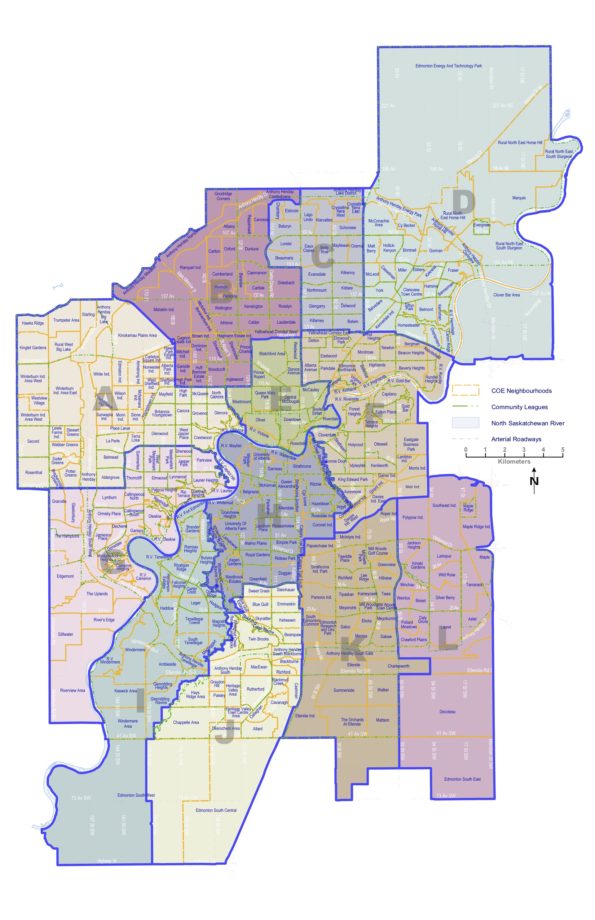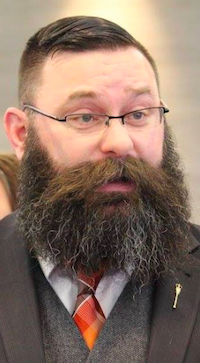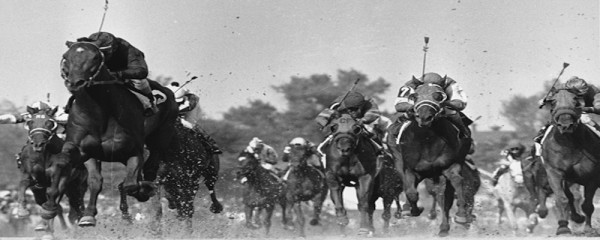If you live in Edmonton there is a good chance you might be voting in a different ward when you cast your ballots in the City Council election scheduled to take place on October 18, 2021.

Edmonton’s Ward Boundary Commission released its final report and recommendations to City Council earlier this month which includes newly redrawn wards that better reflect population growth over the past decade and projected growth over the next twelve years.
This is the first major change in ward boundaries since Edmonton moved to a one-councillor per ward model in 2010. Prior to then, Edmonton had used a two-councillor ward system since 1980.
The boundary changes are significant in many parts of the city, including Edmonton’s central and mature neighbourhoods and burgeoning southern suburbs. The changes create three new urban central wards and four new wards in the south that span from more established neighbourhoods in Mill Woods and south Edmonton to areas south of the Anthony Henday Freeway along the southern edge of the city.
The new southern Wards I, J, K and L have a slightly lower average population anticipation of growth in the southern suburbs over the next decade. If population growth does continue in the south as anticipated, those Wards will become more suburban heavy over time.
Ward F spans the North Saskatchewan River by including the southern half of the current Ward 7 and most of the east neighbourhoods of the current Ward 8. This more closely reflects the Edmonton Public School Board ward boundaries, which were redrawn ahead of the 2017 election.
There has been some concern raised that the issues of inner city neighbourhoods like Alberta Avenue could be lost by being included in a Ward F that encompasses the increasingly gentrifying neighbourhoods that straddle the North Saskatchewan River and make up the southern portion of the new ward.
As a resident of the current Ward 7, I suspect that many of the neighbourhoods included in the new Ward F that lie north of the river (including mine) have more in common with the neighbourhoods south of the river than the neighbourhoods north of the Yellowhead Trail.
And in the heart of the city, Ward E would create a new ward encompassing the downtown and some of the city’s core neighbourhoods, including the yet to be developed Blatchford area where the former Edmonton City Centre Airport once stood.

New Ward names recommended
This was the first time the City of Edmonton used a citizen Ward Boundary Commission to redraw electoral boundaries. While the final report needs to be approved by City Council, and is still open for Councillors to tinker with, handing the process to an arms-length citizen led commission is a positive move.
The proposed boundaries are designated by letter rather than by number, as the current wards are, but the Commission’s final report included a recommendation that City Council consider a naming system that is more intuitive to residents than the current one. For example, Canadian cities like Winnipeg and Montreal use named wards, and Ottawa and Halifax use a combined numerical and named Wards.
While the Commission was given a mandate to draw boundaries that could last for the next three elections, to 2029, it also recommended that City Council consider reducing the allowable population variance for future boundary adjustments from 25 percent to 10 or 15 percent.
The final report also recognized the weakness in the public engagement process that was created due to the tight timelines given to the Commission.
Impact on the next election
The changes would undoubtably have a big impact on the next election, and will leave some big questions for incumbent City Councillors and challengers as to where they stand as candidates.

A number of councillors have seen their current wards changed significantly, meaning that if they seek re-election they may need to campaign in many neighbourhoods they previously did not represent. While incumbency and name recognition is a big advantage in municipal elections, the redrawn boundaries could expose some incumbent councillors to strong challenges.
And the big unanswered question hanging out there – whether Mayor Don Iveson runs for re-election – is key. If Iveson does not run for a third-term, it is anticipated that a number of City Councillors could enter the mayoral race creating vacancies in a number of wards.
Councillor Mike Nickel has all but announced his third campaign for the mayor’s office with a series of anti-bike lane and anti-tax internet memes, and other councillors believed to be considering a run for mayor include Michael Walters, Tim Cartmell, and Sarah Hamilton. It is also rumoured that former councillor and federal cabinet minister Amarjeet Sohi could throw his name in the mayoral race, and, if so, he would be a formidable candidate.

The provincial government is also expected to introduce sweeping changes to Alberta’s municipal campaign finance laws ahead of the October 2021 vote. Municipal Affairs Minister Kaycee Madu was expected to introduce the changes during this year’s spring session of the Legislature, but the COVID-19 pandemic has likely delayed those changes to the fall.
Former Municipal Affairs Minister Shaye Anderson introduced changes in November 2018 that banned corporate and union donations in municipal and school board elections, and set a strict time limit on fundraising for municipal election campaigns.
Municipal candidates will compete with Senate election and referendum
The 2021 municipal elections will also coincide with the province-wide Senate nominee vote and a province-wide referendum promised by Premier Jason Kenney on possible issues ranging from equalization to withdrawal from the Canada Pension Plan, though it remains unclear what the ballot question will actually be.
The injection of provincial and federal issues and political parties campaigning during the same period as the municipal election could create some very interesting dynamics, and leave important local issues typically reserved for civic elections fighting for voters attention.
It is widely suspected that the decision by the United Conservative Party to resuscitate the Senate nominee elections (where candidates will be ostensibly running under federal party banners) and hold a province-wide referendum during the municipal election campaign is being done with the goal to generate attention for partisan conservative issues and increase support for conservative-aligned candidates running at the municipal level across Alberta.


3 replies on “Edmonton’s 2021 election could turn into a horse-race with new Ward boundaries, Senate election & Kenney’s referendum”
Has anyone looked at the overlay/interplay between the newest ward proposals for city council and the existing ward maps for both school boards?
In the past, I’ve seen the city elections staff screw up the fact that people in a particular council ward can require different ballots depending on which EPSB ward they are also in.
Having the city council wards change from numbers to letter names would only make this more difficult, as EPSB already uses letters.
It will be interesting to see if Mr. Kenney follows through with his referendum. He promised it while people were outraged at Justin Trudeau’s reelection, before Covid. Now that Mr. Trudeau has shown himself to be considerably more useful than expected, the referendum could be a political embarrassment to our premier.
I also believe the Senate election is a huge waste. When someone makes a small donation (<$200) to a candidate in the Senate election, the donor gets 75% of their donation back as a tax credit. Thus at a time the province is really hurting financially, they are funding 75% of Senate election candidates.
The challenge we increasingly face with redrawing our ward boundaries is perhaps a reflection that our city has grown too large for a small council. Each councillor essentially sits on a throne with a huge consistency to back them up, needing to raise vast quantities of money from the establishment to stay in their seat. Our wards are almost as large as federal ridings! Perhaps it’s time to look at expanding the number of representatives on council?